I am checking a scala code for gatling where they inject transactions for the period of 20 seconds.
/*TPS = Transaction Per Second */
val minTps = Integer.parseInt(System.getProperty("minTps", "1"))
val maxTps = Integer.parseInt(System.getProperty("maxTps", "5"))
var rampUsersDurationInMinutes =Integer.parseInt(System.getProperty("rampUsersDurationInMinutes", "20"))
setUp(scn.inject(
rampUsersPerSec(minTps) to maxTps during (rampUsersDurationInMinutes seconds)).protocols(tcilProtocol))
The same question was asked What does rampUsersPerSec function really do? but never answered. I think that ideally the the graph should be looking like that.
could you please confirm if I correctly understood rampUsersPerSec?
- block (ramp) 1 = 4 users +1
- block (ramp) 2 = 12 users +2
- block (ramp) 3 = 24 users +3
- block (ramp) 4 = 40 users +4
- block (ramp) 5 = 60 users +5
The results show that the requests count is indeed 60. Is my calculation correct?
---- Global Information --------------------------------------------------------
> request count 60 (OK=38 KO=22 )
> min response time 2569 (OK=2569 KO=60080 )
> max response time 61980 (OK=61980 KO=61770 )
> mean response time 42888 (OK=32411 KO=60985 )
> std deviation 20365 (OK=18850 KO=505 )
> response time 50th percentile 51666 (OK=32143 KO=61026 )
> response time 75th percentile 60903 (OK=48508 KO=61371 )
> response time 95th percentile 61775 (OK=61886 KO=61725 )
> response time 99th percentile 61974 (OK=61976 KO=61762 )
> mean requests/sec 0.741 (OK=0.469 KO=0.272 )
---- Response Time Distribution ------------------------------------------------

